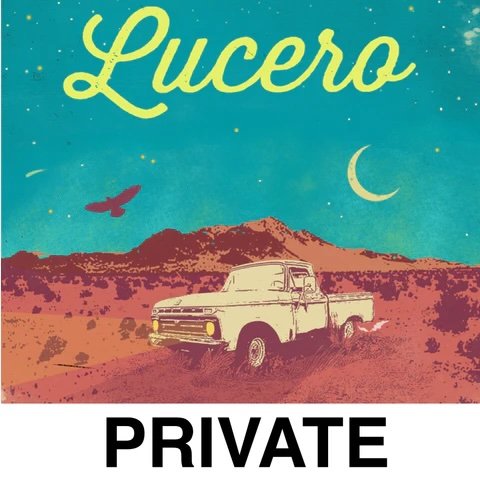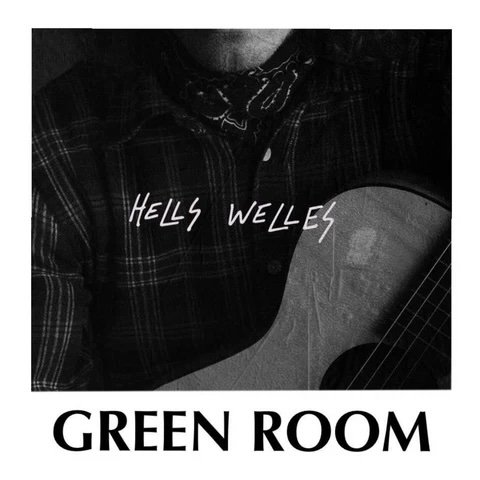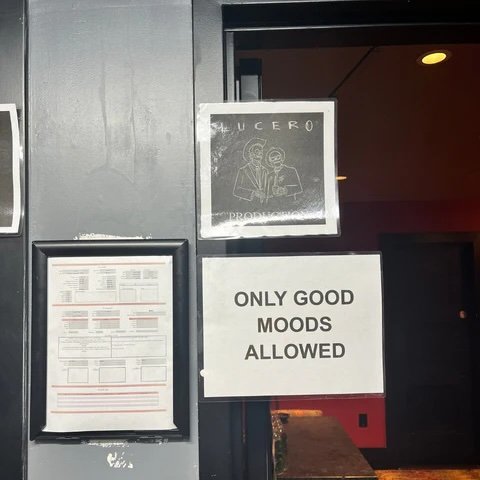6: Day of Show
6: Day of Show
What we actually do on a show day
It’s show day. Again, this is you as the TM on a mid-level club tour, with a FOH engineer, backline tech, merch manager, bus driver, and the band and you're all headed to the venue.
In your advance, you asked for an "on-arrival contact." You've also advanced that the bus will arrive to park at the venue at 10am. Call or text that contact at 9:30am and let them know you're 30 minutes from the venue. Text again when you're 10 minutes away.
You should also have a parking map sent to you during the advance. Have it pulled up on your phone and sit in the jump seat (passenger seat) of the bus next to the driver. Depending on the venue, someone from the staff may guide you to your parking spot, or you may just need to follow the map and any directions you were given to park. If no one from the venue is there when you park, text them a photo of where the bus is parked and confirm it's in the correct spot. Remember, once the driver leaves, the bus cannot be moved, so it's important to make sure you're parked in the right place. The driver will hop out, connect the bus to shore power, and either do some basic bus maintenance or just chill out.
If it's before the hotel's typical check-in time, call the hotel where your driver is staying and ask if their room is ready. If it isn’t, let the driver know and give them an estimated time of when the room will be available.
Venue Access / Load-In
Sometimes a venue will be kind enough to allow you to use the restrooms and showers before load-in. If they’ve agreed to early venue access during the advance, do a quick walkthrough of the restrooms to make sure there's toilet paper and clean towels for the showers. If there’s laundry available, I bring laundry detergent from the bus and place it next to the machines so everyone can do laundry throughout the day. Label the bottle of detergent with the artist's name and don't forget to grab it when you leave.
When it’s time to load in, greet the entire house crew. Introduce yourself by name, explain your role on the tour, and introduce your crew. Ask the production manager to "show you around." They'll walk you to the green room and give you a rundown of the building. If there's anything unusual that might make finding the green room difficult, I’ll take step-by-step photos and text them to the tour’s group chat, along with directions or notes. If there are any door codes, include those in the text as well. You want to make it as easy as possible for everyone to find their way around when they walk in the building.
Door Signs
I make door signs before a tour. You can buy an inexpensive laminator on Amazon to laminate them so they last the whole tour. Some of the signs I make include: "Green Room," "Stage," "Showers," "Production," "Support," etc., along with a few left- and right-pointing arrows. I hang them using mounting putty (a kind of reusable adhesive that won’t damage the walls) so everyone knows what’s what and where to go. Here’s an example of some door signs I’ve made in the past:
Printed Daysheets
You can see a daysheet that was printed by the venue on the wall in that last photo. A daysheet includes the full day's schedule, some venue contacts, and other helpful info about the day. Some TMs will print their own daysheet and post it in the green room. I don't print or post daysheets, and here's why: I spend hours and hours filling out Master Tour, both before and during a tour. I'm incredibly diligent about it, so my tour’s MT is almost always up-to-date and accurate. If anything changes during the day, the very first thing I do is update it in MT. So, a printed daysheet is likely to become inaccurate before MT. Also, most venues will print a daysheet with the basics and post it in the green room for the tour.
Master Tour
Let's touch on Master Tour a little here. It's an incredibly useful tool if you use it correctly. By "correctly," I mean learning all of its intricacies and functions, and keeping it updated. Some folks, like me, rely purely on what's been input into MT to know what's going on during the day. Others just copy and paste illegible crap into the notes section, so eventually no one even looks at it for reliable information. (You can probably sense some trauma in that last sentence.)
It's up to you what kind of TM you want to be and when it comes to master tour and there is no in-between. It's all or nothing.
I can't stress this enough: If you intend to use MT the way it was designed to be used, watch some tutorials on how to use it and really take advantage of all its features. If you are not able to consistently and without fail keep your MT updated, find another efficient way to keep everyone on your tour informed, whether it be printed daysheets or a daily text in the group chat. Bands and crew will quickly lose faith in you and in relying on MT if it's always inaccurate, and it's incredibly difficult to get their trust back once you lose it.
Green Room
In a perfect world, the band’s rider will have been shopped and delivered to the green room by the time you load in. The cold items will be artfully arranged in the fridge, and everything will be beautifully placed on a table with a pot of hot coffee brewing. However, I’ve also had people shop the rider and leave everything in shopping bags on the floor. Whatever the case, go through it all and make sure everything on the rider you sent them is there. Take a couple of minutes to make it look nice. It makes a difference when your artist walks in and sees that someone cares, even if it's just you taking the stickers off the fruit.
Now, some green rooms have no hope. I don't know what the thought process is of some venues, but no one wants to even go in these rooms much less hang out in there, so sometimes it's just best that you take the shop into the bus and avoid the green room if you can. If you're in a van and you need the space, light a candle or something and try to make it comfortable.
Find an Office
Some venues have separate production offices for TMs or whoever needs a quiet place to work. Sometimes it’s just one room for everyone with a table and a chair for you in a corner. Whatever the situation, find a spot and set it up as your office. You want people to be able to find you when they need you. Get your laptop out, go over the contract for the show again, and be prepared for anything or any questions that might come up.
BuyOuts and Hospo Budget
Depending on the hospitality budget for the show, you can ask for what's called a buyout. A buyout is a small amount of money for each person on the tour to use to buy meals. Let’s say your entire hospitality (hospo) budget is $500, you asked for a $20 buyout per person, and there are 10 people on your tour. Here’s how the math works:
Total Hospo Budget: $500
Rider Shop: $194.86
Buyout: 10 people x $20 = $200
Remaining Hospo Budget: $105.14
Now, during the advance, you ask for "buyouts, all receipts from the shop, and any remaining hospo budget to be available at load-in." In most cases, the person who shopped your rider will hand you the receipts for what they bought on your rider, the $200 in cash for buyouts, and the $105.14 remaining budget in cash, along with a paper for you to sign that states how much cash they just handed you.
This is the first point in the day when you need to add to your road report. Take photos or scan the receipts and the paper you signed for the cash, label them and add them to your hospo folder in Google Drive. Input the $200 buyout cash and the $105.14 remaining budget in the hospo tab of your road report as income, and input the -$200 you’ve given out as a buyout expense. It should look like this:
Venue Check-In
Now is a good time to start a text thread with the venue’s production manager. Ask them where you're at with current ticket sales, and if the show isn’t sold out, ask if the venue is a good "walk-up" venue. This means, do they expect a significant number of people to buy tickets at the door on the day of the show? If the show is sold out, you could ask for a pre-settlement. A pre-settlement shows all income and expenses as expected before the end of the night. It’s a good idea to stay in open communication with the venue’s PM throughout the night. Consider yourself part of a team working together toward the common goal of an all-around successful show.
Crew Check-In
Now is also a good time to check on your crew and hand them some buyout cash. Make sure they’re not in the middle of something important and ask how things are looking for the day. Ask if they need anything or if they foresee any issues that need to be addressed. Offer to bring them coffee or order them food, then give them their buyout. As someone who also tours as an engineer, I appreciate my TM checking in with me each day, but I always ask if they'd prefer to be left alone to work and pick up their buyout later. Whatever you do, don’t stand around on stage bothering the crew during load-in. Just do a quick check-in and get back to work.
Guest List
There's all kinds of ways that people will send you their guest list for the night. They’ll send you texts, tell you in person, or secretively add them to Master Tour. However they manage to get names to you, gather them all up and create a single, organized guest list to send to the venue. If you're a Master Tour user, there's an option to print your guest list as it's entered into MT. Or you can make a sheet in Google Pages that's a little easier to edit as you go.
A guest list should have the artist’s name, the show date, each guest's first and last name, and how many and what kind of tickets they need. The basic types of tickets are AA for green room access, GA for general admission, and Photo for anyone who will be shooting the show with a professional camera. If you're traveling with tour credentials, send in a pass sheet with the guest list that shows images of each credential and what access they allow.
Pre-Show
A lot of what you do just before a show depends on the artist’s and crew’s preferences. As you go through the tour, you’ll figure out what your specific responsibilities are. For example, on a recent mid-level club tour, I was the TM with a FOH, backline tech, and merch manager. Here are some of my actual responsibilities from that tour:
Print setlists (as many as the crew asks for)
Get stage towels (as many as the crew asks for)
Prepare each band member’s preferred on-stage drink and put it on stage
Gather the band or make sure everyone is side-stage and ready for the show
Give a call on the radio that we're, "go for show" and the show intro begins
I stay near the stage for a couple of songs to make sure everything is going smoothly, then pop out front to check on my FOH engineer and merch seller. I also look at the crowd to make sure there aren’t any fans who need to be monitored. Nothing ruins the vibe like an obnoxiously drunk person or a super fan with ulterior motives. Just scan the room and enjoy the show for a bit. It’s always cool to see your friends on stage doing what they love.
Show Time
You now have roughly 90 minutes to catch up and work on tomorrow’s show. Evaluate the rider shop from that night and check what food and drinks are on the bus. Edit your rider for the next show, removing items you have in excess and adding anything you're running low on. Go to the advance email thread for the next night's show and send an update email with a confirmed schedule, including the bus's estimated arrival and departure times. Include the updated rider shopping list as well. Reread the entire thread to make sure every detail has been addressed and a solution found for any issues.
Post-Show
Not unlike pre-show responsibilities, a lot of post-show tasks depend on the artist’s preferences. This could involve getting ice from the venue for the bus coolers, packing up all the hospitality items in the green room and moving them to the bus, or ordering post-show food for everyone. For example, I once toured with an artist who wanted a bubble bath and a turkey sandwich every night before bed. I’d order the sandwich, call to check into the hotel room and have a car ready to take them to the tub immediately after the show. Whatever the request, be prepared to make it happen before the show ends.
Other post-show tasks, like settling, are required no matter what. You can settle during the show or wait until after the show. See Post 4 on settlement for more details. After settling, ask the person you settled with to email you a scan of the settlement sheet with both of your signatures, which you’ll add to your settlement folder in Google Drive. Then, input all the numbers from the show to your road report.
After everyone has had time to decompress and shower, do a "dummy check." Walk around the green room, FOH, stage, merch area, and anywhere else the tour has been working to check for anything left behind. You’d be surprised how many phone chargers and pairs of shoes get forgotten.
On a side note: I worked in a music venue for many years before I started touring. Sometimes, I’d go into the green room after a show to find it absolutely destroyed. The industry is a lot smaller than you'd think, and venue staff will remember you and the band you’re with if you leave the green room looking like shit. You don’t have to mop the floors or anything, but tidy up after yourselves. If the band and crew doesn’t do it, take 10 minutes to throw the trash away. Do the same with the area where the bus is parked. Show the building and its staff respect, and they’ll do the same.
Venue Curfew / Bus Call
Some venues have curfews for when everyone needs to be out of the building. I typically ask for enough time after the show for everyone to spend some time with any guests they invited to the show, take a shower and gather their things. Remember, the venue staff is at work and would like to go home at some point. If you want to party, take it to a bar.
Bus call is the time the bus actually leaves the venue. It’s calculated based on several variables: allotted driver hours, how far away the next venue is, when the bus has to leave the current venue's parking lot, and when it can park at the next venue. Bus call could be right after the show, or it could be at like 6 a.m. Be sure to remind everyone on the tour via text when bus call is. Set an alarm for yourself 20 minutes before bus call to make sure your driver is back from the hotel and everyone is on the bus. When you've confirmed the bus is ready to roll, tell the driver, “We’re a bus,” and off you go to the next show.
A Note from me
There’s really no way I can tell you everything you’d need to know on tour. Things are going to go wrong, and you’ll have to adjust as you go. But hopefully, these six posts have given you a better idea of how to go about it. My partner says this series make things "seem approachable and not as scary." That’s really what I was going for when I started writing it. The best advice I can give anyone who wants to get into TMing is to just jump in feet first. There’s not a single veteran TM out there who didn’t make a bunch of mistakes to learn from, so get out there, fuck up and start growing.
If we happen to run into each other out on the road, please come say hi!
Love,
Lauren Oakes







